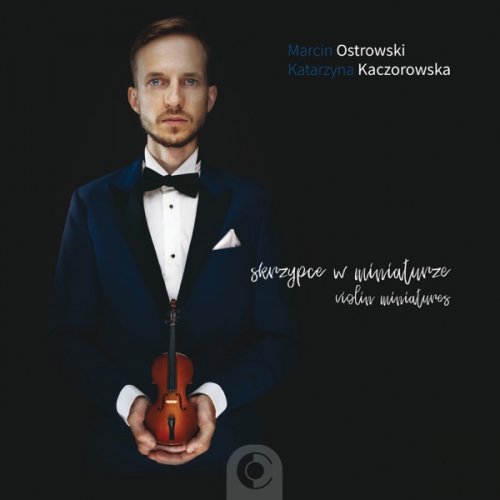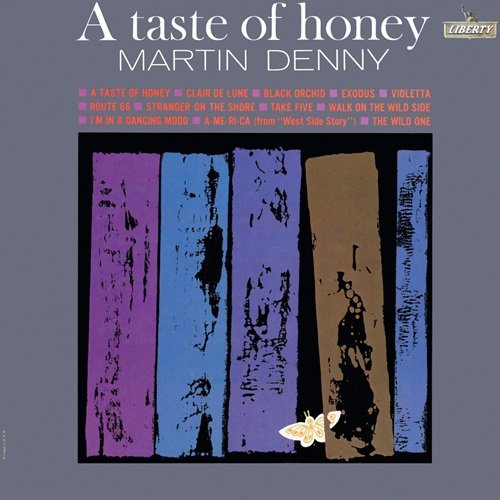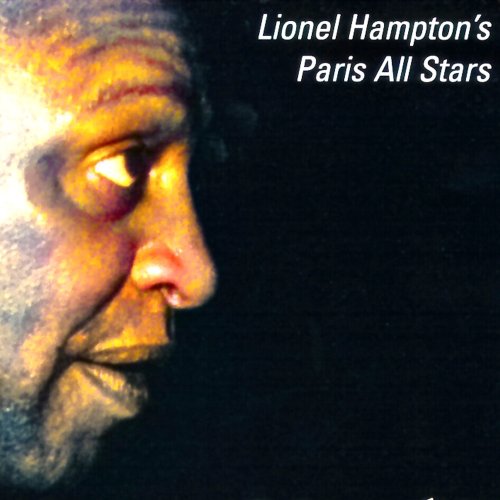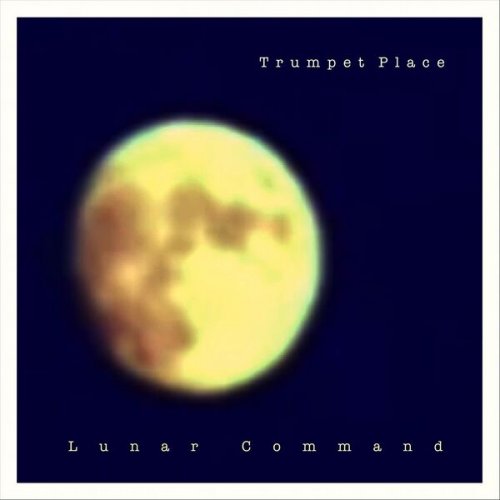Marcin Ostrowski, Katarzyna Kaczorowska - Violin Miniatures (2018) [Hi-Res]

Artist: Marcin Ostrowski, Katarzyna Kaczorowska
Title: Violin Miniatures
Year Of Release: 2018
Label: RecArt
Genre: Classical
Quality: flac lossless / flac 24bits - 44.1kHz
Total Time: 01:34:03
Total Size: 455 / 916 mb
WebSite: Album Preview
TracklistTitle: Violin Miniatures
Year Of Release: 2018
Label: RecArt
Genre: Classical
Quality: flac lossless / flac 24bits - 44.1kHz
Total Time: 01:34:03
Total Size: 455 / 916 mb
WebSite: Album Preview
---------
CD1
01. Suite bergamasque, L. 75: III. Clair de lune (Arr. A. Roelens for Violin & Piano)
02. 4 Pieces, Op. 7
03. Estrellita (Arr. J. Heifetz for Violin & Piano)
04. Romanian Folk Dances, Sz. 56 (Arr. Z. Székely for Violin & Piano)
05. 6 Pieces, Op. 79: No. 6, Berceuse
06. 5 Pieces, Op. 81: No. 1, Mazurka
07. Berceuse sur le nom de Gabriel Fauré, M. 74
08. La berceuse d'Aïtacho Enia, Op. 52
09. Gypsy Caprice
10. Abodah
11. Song-Poem "In Honour of an Ashugh"
CD2
01. Praeludium & Allegro in the Style of Pugnani
02. Fantaisie, ou Scène de ballet, Op. 100 (Arr. for Violin & Piano)
03. La Gitana
04. Spanish Dances, Op. 21: No. 1, Malagueña
05. Baal Shem, B. 47: II. Nigun (Version for Violin & Piano)
06. Chaconne in G Minor (Attrib. to T. Vitali)
The album "Violin miniatures" (RecArt 0028) contains 17 musical pictures being a result of a long-time cooperation between Marcin Ostrowski and the pianist Katarzyna Kaczorowska. The subject of instrumental miniatures, interpretation of which is at the heart of the violinist’s artistic interests, is the common ground for the two discs.
The stylistic diversity of the first half of the twentieth century, which is the subject of the artist's PhD dissertation, was the criterion for choosing the repertoire for CD1. Amongst eleven presented works, one can find a wide range of compositions, from the world hits from the borderline of classical and popular music to an avant-garde experiments with form and sound.
Claire de lune by Claude Debussy written in 1905 is a lyric piece based on a poem byPaul Verlaine, displaying the characteristics of impressionistic music and rooted in French culture. Four pieces for violin and piano op.7 by Anton Webern composed in 1910 is a series of expressionist miniatures derived from the Second Viennese School. They are an example of the condensation of the form into Webern's aphoristic style and the use of classical miniature as an avant-garde composition. Estrellita by Manuel Ponce is a reference to the Mexican and American cultures. Originally composed as a song, it owes its international popularity to the arrangement for violin and piano by Jascha Heifetz. Romanian folk dances by Béla Bartók represent the influence of folk music on the development of instrumental miniature. These melodies come from recordings made during the ethnomusicological studies of the countries of the former Austro-Hungarian Empire led by the composer himself.
The two pieces by Jean Sibelius, Mazurka op. 81 No. 1 and Berceuse op.79 No. 6, prove thatextended research of world’s musical literature in search of attractive compositions is worthwhile. So far the works of the creator of the Finnish national school have not been included in the violin performance practice, however they are compositions, which artistic value iscomparable to the Sarasate or Kreisler works. Berceuse sur le nom de Gabriel Fauré, composed in 1922 by Maurice Ravel, is based simultaneously on references to church music, the style of French harpsichordists, as well as the original concept of structure, whereparticular sounds of the melody reflect the syllables of the name Gabriel Fauré. Another lullaby in this selection of miniatures is the Berceuse d'Aïtacho Enia. It is Karol Szymanowski’s memory from a stay in the Basque Country, presented through his unique musical language. Gypsy caprice by Fritz Kreisler from 1927 emphasises the influence of Romani culture on the development of the violin repertoire and the Viennese environment’s interest in other ethnicities. It also allows to take a closer look at the elements characteristic for the master of the violin miniature genre, which Kreisler is widely recognised for.
Ernest Bloch benefited from the musical resources of another ethnic group by composing Abodah for Yehudi Menuhin. It is a work closely related to the musical celebration of a Jewish holiday and confirms the broad participation of the Jewish diaspora in the development of the violin playing in the twentieth century. In 1929 Aram Khachaturian paid tribute to the centuries-old musical tradition of the Caucasian nations by composing Song-Poem. The work inspired by the folk art of Ashugs gives the opportunity to get acquainted with the realities of life and work during the communist regime.
2nd part of the album contains the previous recordings made by Marcin Ostrowski, which present a musical journey through the era of violin virtuoso works. Prelude and Allegro transports the listenerinto the classicism when Giovanni Battista Viotti's pupil - Gaetano Pugnani was ravishing the audience with his violin playing at salon concerts. Fritz Kreisler imitated the style of the Italian master so faithfully, that for 25 years, between 1910 and 1935, this composition was considered to be the original work of Pugnani. The next stop of this journey is the nineteenth century France. In Scene de Ballet, Charles-Auguste de Bériot reveals the scene of the French ballet and captivates the richness of the melody. It is worth noticing that this famous creator of the Franco-Belgian violin school educated such great virtuosi as Henri Vieuxtemps and Heinrich Wilhelm Ernst.
The listener is taken to the camp of travelling gypsies by Fritz Kreisler’s arrangement of the 18th-century Spanish-Arabic song La Gitana. The easily remembered melody is flavoured with the Viennese charm. This is one of characteristic qualities of Kreisler's works, whose similar short pieces ensured his immortal fame. In his compositions Pablo de Sarasate often reached for sounds specific to his native Spain, for example in the Spanish Dances op. 21. Malagueña is the first one of the cycle and it combines dance rhythms with virtuosity. Nigun is the second movement of the suite Baal Shem by Ernest Bloch. The nostalgic and extremely emotional piece refers to the tradition of Hasidic song without words. Ernest Bloch was an American composer of Jewish origin. He studied in the class of Eugène Ysaÿe, who was taught by Henri Vieuxtemps. Interestingly enough, the last one was one of Charles-Auguste de Bériot’s pupils.
The journey finishes with the Italian baroque, where the history of virtuoso violin began. For decades Chaconne, attributed to Tomaso Antonio Vitali, has been included in the standard repertoire of outstanding violinists. Its post-romantic arrangements combine the baroque polyphony with the expression and virtuosity of subsequent eras, which establishes a brace for the history of violin miniature.
![Gonzalo Rubalcaba - Gonzalo Plays PIino (2025) [Hi-Res] Gonzalo Rubalcaba - Gonzalo Plays PIino (2025) [Hi-Res]](https://www.dibpic.com/uploads/posts/2025-12/1766206867_folder.jpg)

![Alma Micic - You're My Thrill (2024) [Hi-Res] Alma Micic - You're My Thrill (2024) [Hi-Res]](https://www.dibpic.com/uploads/posts/2025-12/1766493943_amyt500.jpg)



![Iman Spaargaren & Peter Bjørnild - In Essence (2025) [DSD256] Iman Spaargaren & Peter Bjørnild - In Essence (2025) [DSD256]](https://www.dibpic.com/uploads/posts/2025-12/1766381912_cover.jpg)

